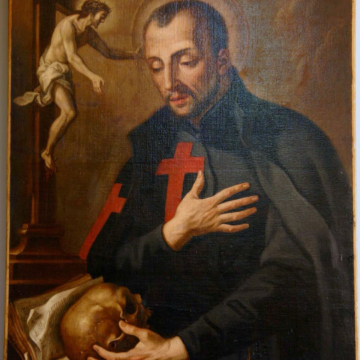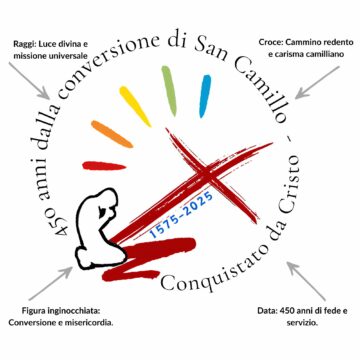 At two in the night your eyes are opened. A desperate voice accompanied the umpteenth tremor. ‘Aama, Aama’, mummy, mummy, in Nepalese. We know that voice – it belongs to Dipdarsan, a boy aged eleven who lives in the next tent. Every night he wakes up with nightmares. He lost all of his family who were crushed under a house that was devastated by the earthquake that took place in April. He was saved after eighteen hours. His crying slowly fades away in the arms of Nabina, who is cradling him.
At two in the night your eyes are opened. A desperate voice accompanied the umpteenth tremor. ‘Aama, Aama’, mummy, mummy, in Nepalese. We know that voice – it belongs to Dipdarsan, a boy aged eleven who lives in the next tent. Every night he wakes up with nightmares. He lost all of his family who were crushed under a house that was devastated by the earthquake that took place in April. He was saved after eighteen hours. His crying slowly fades away in the arms of Nabina, who is cradling him.
Nabina is one of the five ‘grannies’ who have adopted Dipdarsan. And every night they take it in turns to ward off the nightmares of a child who has had to grow up quickly. He does not have access to any psycho-social service and he stopped going to school years ago. For him, however, there are welcoming arms: they accompany his pain and try to give a meaning to all that suffering.
You feel the strength of community in people’s wish to go on, in the solidarity specific to a culture that goes back thousands of years whose centre is compassion. It is also sensed in the scent of the incense that Nabina will take to the temple together with flowers.
The morning is animated by noises. The tents have been open since first light. Barati is putting the bricks in a row together with his children his wife and his neighbours. Barati is one of the thousands of Nepalese who live abroad, often in very precarious conditions, not to day inhuman ones. He has been in India for many years: he goes from city to city, does what he can, but always sends money home. He has just returned so as to rebuild his house which was destroyed by the earthquake. His is a house with five rooms and is large enough to accommodate his elderly parents in law as well. This is what is happening a little throughout the country: every day you can see walls made up of bricks and bamboo spring up.
 The families of the same tribe build together, piece by piece, not only little blocks but also a community fabric that is able to stand up to the devastating violence of an earthquake. Barati confesses that in India he works fifteen hours a day, until he is exhausted, in order to help his family and his people. In recent days, he stresses. He has felt ‘strong and full of hope’.
The families of the same tribe build together, piece by piece, not only little blocks but also a community fabric that is able to stand up to the devastating violence of an earthquake. Barati confesses that in India he works fifteen hours a day, until he is exhausted, in order to help his family and his people. In recent days, he stresses. He has felt ‘strong and full of hope’.
He says this while he looks at the large statue of the Buddha which is at the top of the hill. Smiling, he points to his neighbours who are positioning bamboo in order to begin building the roof of a house together with their wives. The women are the great protagonists of a reconstruction which has the elements of a miracle.
Life is returning to normal quickly despite the earthquake and the arrival of the monsoons. And a great deal is due to the women, in particular those who live in the mountain villages. The face of Amrita represents them.
She lives in the village of Manbu, in the district of Gorkha. She had four children, she has a husband in Malaysia whom she has not heard from for a year, and every morning she leaves the stable for the goats which has become her home in order to go and work in the fields. To reach her village she needs at least six hours by foot and nobody in the village remembers the last time that they saw a doctor. With the Camillian Task Force – the emergency action NGO of the Camillians – we were the first to reach the village over two weeks after the earthquake.
We met her when we began our medical mission. She was hiding behind the wall of her old house which was in ruins while we gave injections and general check-ups, also discovering a case of tuberculosis. A neighbour of hers had asked us to do up to her. Amrita had lost all of her four children under the rubble of her house, and since then she had not spoken to anybody. She did not even manage to cry. We asked her to have some tea with us. She gradually opened up. She told us about her wish to die, of the husband that she had been waiting for, and of the children that she no longer had.
 This was a tale made up of gestures more than words. She showed us her field of maize. We helped her to take some mementos from her ruined house. An exercise book of her children, pictures of the Buddha, some kitchen utensils. After two days, helped by other women from the village, she began to move the rubble. She set up a tent. In order to begin living again.
This was a tale made up of gestures more than words. She showed us her field of maize. We helped her to take some mementos from her ruined house. An exercise book of her children, pictures of the Buddha, some kitchen utensils. After two days, helped by other women from the village, she began to move the rubble. She set up a tent. In order to begin living again.
Here we have the great capacity for resilience of a poor people that has always had this capacity, but which has also always known how to rebuild lives after experiences of great suffering. In recent days some schools have also reopened. Here the dispersion of people is very great: the official statistics talk about almost 1,200,000 children between the ages of five and sixteen who have never come back to their classes. Perhaps someone will now take Dipdarsan to school. Perhaos this little boy will soon stop having nightmares during the night. And will be able to begin to dreams about his future.












Camillians on Facebook
Camillians on Twitter
Camillians on Instagram